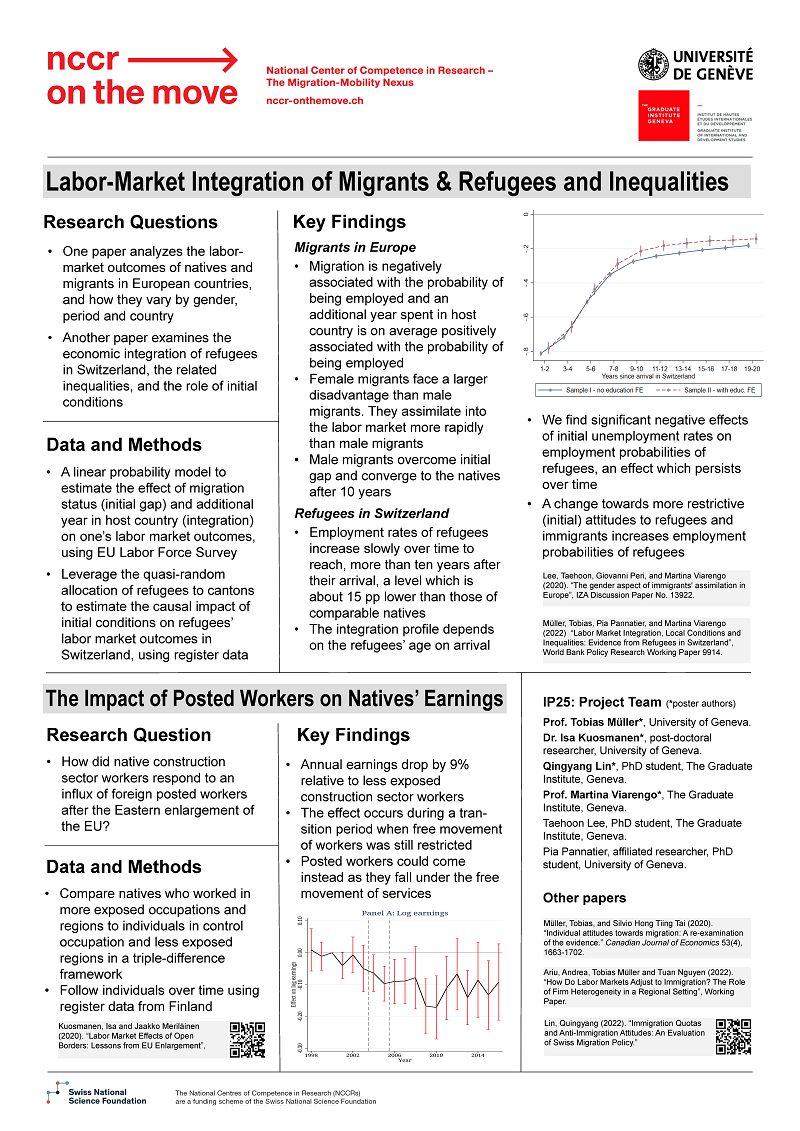Tobias Müller and Martina Viarengo
Migration and Labor Market Inequality: The Role of Skills, Gender and Trade
Project Summary
The project examines the relationship between inequality and migration by focusing on the factors that determine labor market inequalities, both on the demand and supply sides.
We explore the question of how migrants cope in a context of increasing inequalities by considering different dimensions. In the first subproject, we look at the contributions of technology, trade, and migration to the evolution of labor market inequalities. In subproject two, we consider the gender dimension in labor market outcomes of migrants.
Scientific Poster 2022 (PDF)
Key Findings:
Subproject 1: Trade, Technology, and Migration
- Annual earnings drop by 9% relative to less exposed construction sector workers.
- The effect occurs during a transition period when free movement of workers was still restricted.
- Posted workers could come instead as they fall under the free movement of services.
Subproject 2: Labor Market, Migration, Gender, and Inequality
Migrants in Europe
- Migration is negatively associated with the probability of being employed and an additional year spent in the host country is on average positively associated with the probability of being employed.
- Female migrants face a larger disadvantage than male migrants. However, they assimilate into the labor market more rapidly than male migrants.
- Male migrants overcome initial gap and converge to the natives after 10 years.
Refugees in Switzerland
- Employment rates of refugees increase slowly over time to reach, more than 10 years after their arrival, a level which is about 15 pp lower than those of comparable natives.
- The integration profile depends on the refugees’ age on arrival.
- We find significant negative effects of initial unemployment rates on employment probabilities of refugees, an effect which persists over time.
- A change towards more restrictive (initial) attitudes to refugees and immigrants increases employment probabilities of refugees.
Project-related scientific publications


